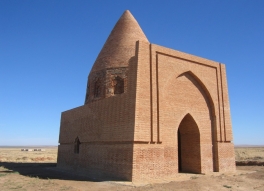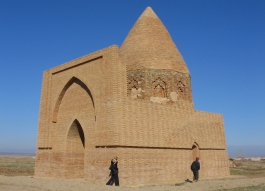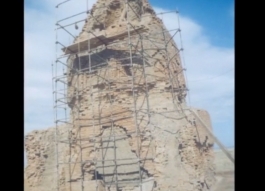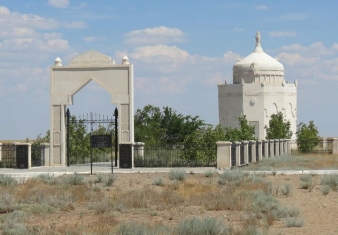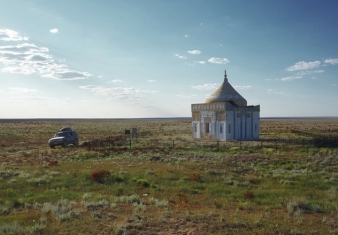 Cultural heritage
Cultural heritage
50.0937, 55.9207
There are many monuments and attractions in the Aktobe region. By traveling on the tourist destination way you can visit the necropolis of the Middle Ages, and walk on the land which were sang in the epics of akyns, venerate to the tomb of Kobylandy batyr, visit Bulak village, where was born the Hero of the Soviet Union Aliya Moldagulova. In addition, you must see the astounding ancient monument, which was preserved in the territory of West Kazakhstan - Abat Baytak.
Mausoleum of Abat-Baytak is an architectural monument of the XIV-XV centuries. It is located eight miles east of Beskopa village, Kobda district, Aktobe region. It is a unique construction of Altyn Orda period. There is no analogue in terms of architectural style in Kazakhstan. Monument such a portal-type tent is only in Russia, Chelyabinsk region, Bashkiria.
According to legend, Abat-Baytak was built on the place of Abat batyr's death. He was a son of famous Kazakh philosopher-utopian Asan Kaigy of the XV century. Abat fell off the camel during wedding process. By showing their grief, people erected this magnificent monument in short period. The second part 'Baytak' of the name was taken from "The whole world", which started from here.
Russian scientist P.Rychkov examined first mausoleum of Abat-Baytak at the end of the XVIII century. He described it as "Baitan". French scientist and member of the Orenburg Archives Commission I.Kastanie gave a complete description of mausoleum in the early of the XX century. In the 50-70 years of the ХХ century, a famous explorer Malbagar Mendikulov said that the mausoleum relates to the 13th century, to the time of foundation of Altyn Orda, when kypshaks were closely connected with Khorezm.
There was a suggestion, that the mausoleum was destroyed and had been lost forever to the scientific community. However, "Kazrestavratsiya expedition of the Ministry of Culture of the Kazakh SSR under control of the expert guidance of religious architectures Serik Azhigaliev added it to the list of protected monuments with national importance in1979-1980.
According to the classification of Kazakhstan mausoleums, Abat-Baytak relates to portal-domed structures, "marquee mausoleums" with double coats. Today, the historical monument portal was completely destroyed. Only four-sided frame was preserved from construction, in which preserved eleven- tigran drum with conical dome ending, and partially destroyed.
Outside dimensions are 9, 52 x 9, 8 m., an extant height of the mausoleum is 14.5 m, and the original height was about 16 meters. Tetrahedral skeleton has one opening on the south side, and the second is founded by the west towards to the abutting portal (opening was laid of adobe bricks to protect the local population from livestock facilities).
Eleven- tigran drum with a small narrowing to the base of the dome was preserved in the skeleton. False openings were made of bricks on the faces of the drum. Double dome - inside spherical (it is visible on the destroyed region) and external conical marquee. Inside mausoleum was plastered. Internal plan consists of eight-and sixteen tigran, which was rolling smoothly into dome's circle. False openings were made in the western and eastern edges.
There were no traces of graves. Abat-Baytak Mausoleum was built of mud brick, and was lined with burnt bricks in a square shape 27x27x5-7sm.
Brick of keystone section was used in laying dome. There were traces of blue glaze on the face.
The smooth transition of the square base of the drum and dome gave an impression of "lightness" of building, and one can only imagine what a medieval architect magnificent monument.
Architectural and stylistic features of the Abat-Baytak mausoleum makes close it to the mausoleums of the XII centuries from Old Urgench - the mausoleum of Il-Arslan khorezm (Fahraddin Razi), the mausoleum of Tekesh khorezm in Khorezm, and the Kok-Kesene mausoleum in Sygnak, Keshene (XIV-XV centuries).
It should be noted that the North Caucasus also has similar patterns of portal-hipped tombs, near the Madjar town. As mentioned above, they were strongly influenced by architectural Khorezm School. All listed toms relate to the Altyn Orda period. Apparently, it was built over the graves of outstanding personalities of that time.
Historical monument had passed through significant damages in Altyn Orda time for many centuries. Due to the program "Cultural heritage», it was possible to preserve and restore it. Restoration work began in 2005. The destroyed dome and the portal restored by using bricks, which was made by medieval technology and raw of local materials.
Investigation and restoration work had been successfully completed in 2007. Now Abat-Baytak mausoleum is a pilgrimage place for local people and visitors.
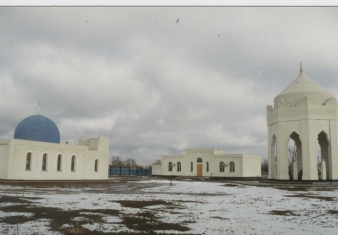
In 50 km from the modern city of Atyrau, there is one of perspective tourist routes, regional memorial estate "Khan Ordaly Sarajshyk" who opens all ancient history of the Kazakh people.
The grave site of the great Kazakh poet of the 19th century, free-thinker and inspirer of the rebellion of Makhambet Utemisov is situated in Inder, Atyrau region, 40 km to the south-east from the village Inderbor.
Atyrau region is rich in its architectural monuments of culture, one of them is considered to be Zhuban Mausoleum.
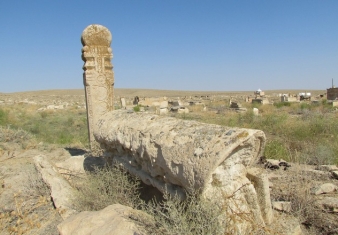
Senek reserve is an architectural monument of the XVII - XX centuries, it represents a necropolis consisting of several sepulchral constructions and an old mosque.
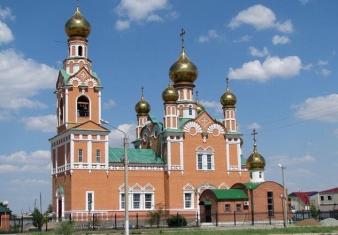
One of the oldest and most beautiful architectural monuments of the city - Uspenski Cathedral is located in the heart of the city of Atyrau, on Issatay Taimanov street, just a few steps from the main square.
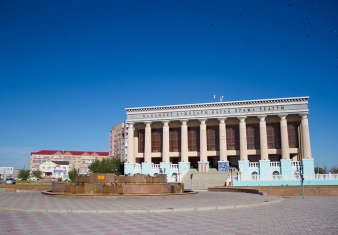
One of the leading places in the cultural life of Atyrau and the whole Atyrau region belongs to the Kazakh Drama Theater named after Makhambet Utemisov.














